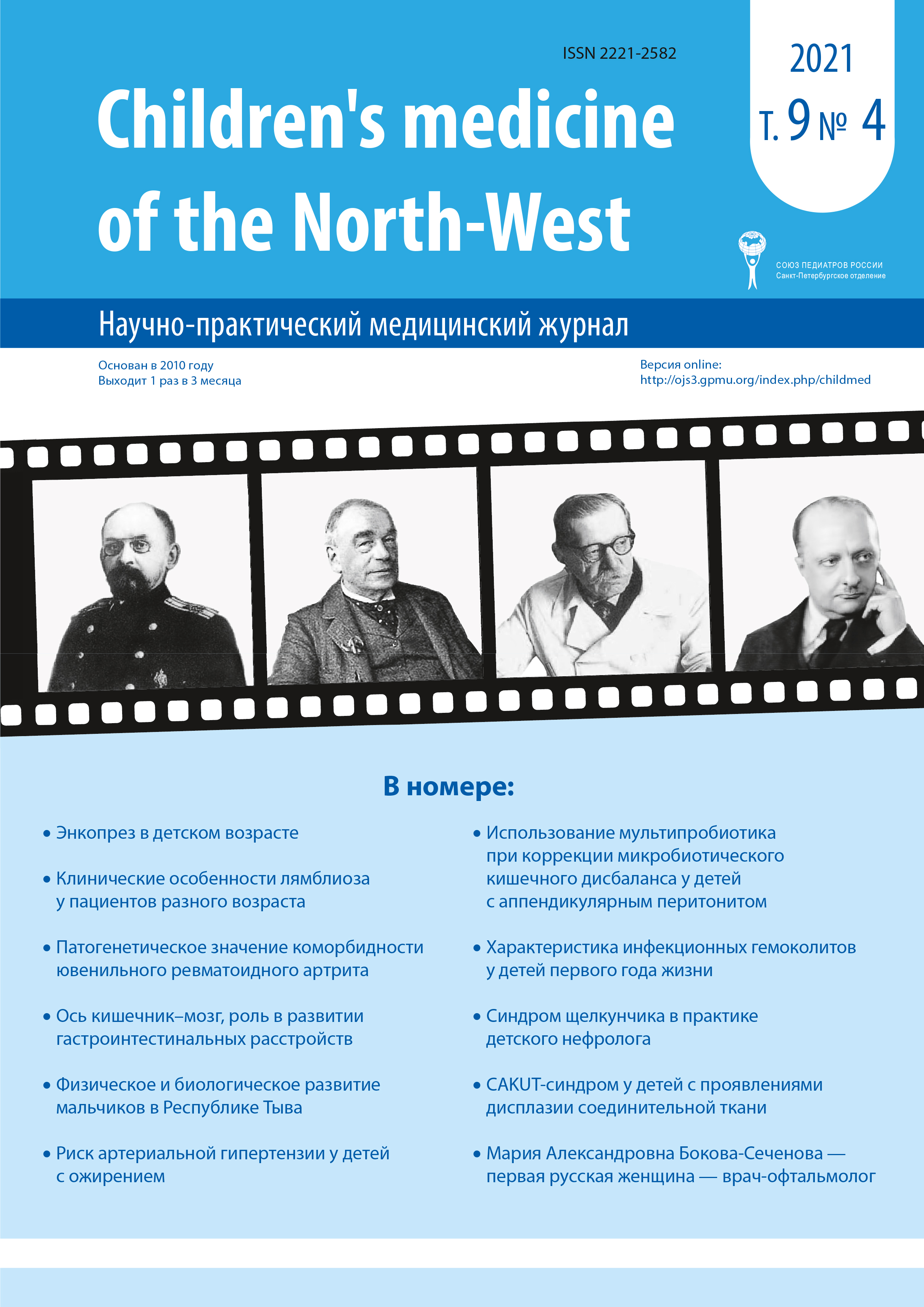CLINICAL AND LABORATORY CHARACTERISTICS OF INFECTIOUS HEMOCOLITIS IN CHILDREN OF THE FIRST YEAR OF LIFE
Abstract
The goal is to study the clinical and laboratory features of infectious hemocoliths (IH) in children of the first year of life. Patients and methods. An analysis of 72 case histories of infants with IH who received treatment in 2018 was carried out. Hemocolitis syndrome was recorded visually and according to changes in coprograms. The severity of I IH was determined by the Clarke index, the severity of dehydration was determined by the WHO scale. The etymology of IH verified by bacterial culture of faces, PCR using AmpliSens OKI screen-FL reagents. Toxigenic C. difficile was determined by immunochromatographic method. Enterovirus antigens in faces were detected by modified complement binding reaction method. The analysis of the results was performed using standard statistical methods. Results. Patients formed groups: 1) IH caused by pathogenic bacteria (38.9%); 2) IH caused by opportunistic bacteria or a combination of them with intestinal viruses (29.2%); 3) IH of unspecified etiology (31.9%). The average age of children in the groups differed: 8.1±3.5 months, 3.9±3.2 months, 5.9±2.9 months; p1-2<0.01; p1-3<0.01; p2-3<0.02. The enterocolitic form of IG was observed more frequently in the groups (78,6%; 71,4%; 69,6%), than gastroenterocolitic (21,4%; 28,6%; 30,4%; p >0.05). The severity of IH in groups 1 differed: 10.2±2.4 points; 8±2.8 points; 9.4±3 points; p1-2<0.01. The severity of dehydration also differed: 1.8±2 points; 0.6±1.2 points; 0.8±1.5 points; p1-2=0.01; p1-3=0.01. Conclusion. The severity of IH caused by pathogenic bacteria and of unspecified etiology exceeded that of IH caused by opportunistic bacteria.



